Chiang Mai, Thailand Travel Guide
About Getting Around Attractions Hotels Eats Essentials & Practicals
Chiang Mai Old City
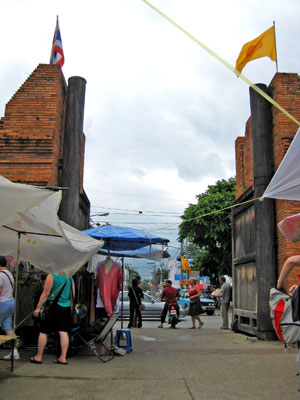
Gates to Chiang Mai Old City
Overview: As mentioned in the Chiang Mai introduction page, Chiang Mai centers around the Old City. The former capital of the Lanna Kingdom, the Old City was founded in 1296 by King Mengrai and remains one of Chiang Mai’s top attractions. Occupying a relatively small area, Chiang Mai’s Old City is nearly square in shape, measuring a little over a mile long and wide. Its walls and moats (1800 by 2000 meters complete with fountains) fortified the city against Burma attacks.
Nowhere is Chiang Mai’s culture and history more visible than its Old City. Starting from Chiang Mai’s five gates, or pratus, Tha Phae Gate, which is the main and most visited of all gates, stands in the middle of the eastern wall. Tha Phae means “raft landing,” a meaning which can be attributed to the gate’s position near the Ping River. No vehicles are allowed through this gate, unlike the other gates. The other four gates are Chang Puak (north), Suan Dok Gate (west), Suan Prung (south) and Chiang Mai Gate (south).
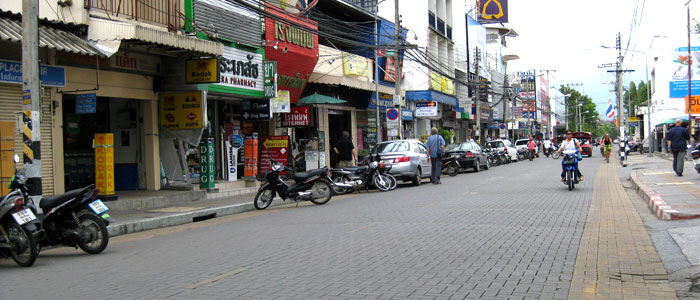
Chiang Mai Old City
Adding to the Old City culture, Ratchadamnoen Road, the main east/west road in Chiang Mai’s Old City, turns into a pedestrian only (no vehicles) fair with arts and crafts, entertainment and music on Sundays. But every day, you can stroll up Moon Muang Road, located just within the eastern wall up to Moon Muang Road Lane 6 to the Sompet Market and check out all the colors of fresh fruits, vegetables and cute flat brick lanes.
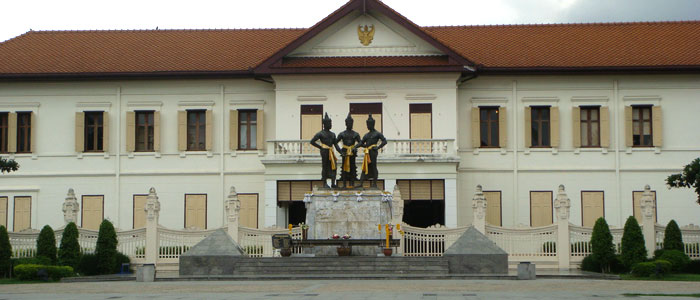
Chiang Mai Old City
If you head a bit further west from the market torwards the center of the Old City on Phra Pok Klao, you’ll find the Three Kings Monument, dedicated to and depicting King Mengrai, King Ramkamhaeng of Sukhothai and King Ngammuang of Phayao. It’s said that the latter kings helped King Mengrai plan out the city of Chiang Mai. Behind the Three Kings Monument is Chiang Mai’s City Arts and Culture Center, the former Provincial Hall. Within the Old City are numerous wats, or temples. Among them are Chedi Luang Wat, Wat Muenlarn amd Wat Phan Aon. And finally, what would a good Thai tourist attraction be without bazaars and vendors. Just outside or to the east of the Tha Phae Gate are vendors selling food, arts and crafts and clothing. Inside the Tha Phae Gate on Ratchadamnoen Road, vendors set up shop as well.
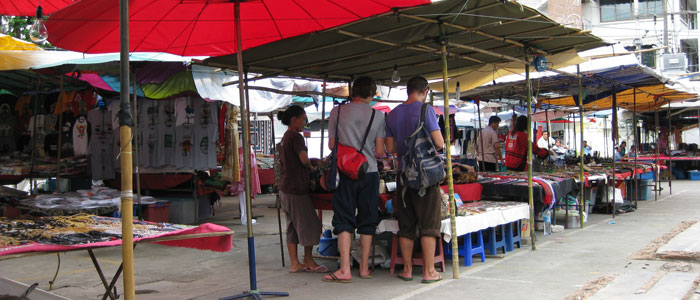
Chiang Mai Old City
Chiang Mai’s Old City comes complete with an abundance of restaurants, cafes and bars. Take a break from sightseeing and relax at Wawee Coffee on Ratchadamnoen Road (towards the center of the Old City) or the Black Canyon Coffee at the corner of Moon Muang Road and Ratchadamnoen Road. Just south of the Black Canyon Coffee on Moon Muang Road are loads of bars and restaurants.
Inside and outside Chiang Mai’s Old City are an abundance of Thai oil and foot massage businesses. Some are actually within temple grounds in the Old City and the cost is minimum – maybe 200 baht an hour.
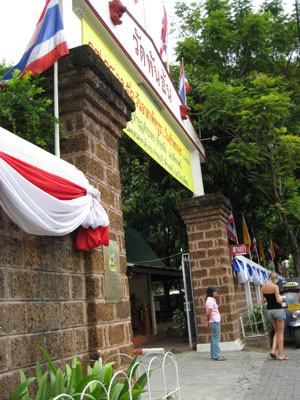
Chiang Mai Old City
Location: Chiang Mai’s Old City lies between the Chiang Mai’s airport zone to the west and the Ping River to the east.
Accessibility: The streets in the Old City are nothing to be afraid of as far as wheeling on them goes. They are pretty quiet, especially the sois (small streets). Sidewalks are a bit uneven because they are old and weathered. Sometimes, the sidewalks narrow or have a pole in the middle of them so you end up wheeling on the street. Other sidewalks can be extraordinarily wide where vendors may set up shop. Curbs are definitely not as high in the Old City as they are outside the Old City. Ramps are inconsistent but as far as wheeling around, seeing the Old City and getting a feel for it, Chiang Mai’s Old City is fairly accessible.
Getting There: Wheel, walk